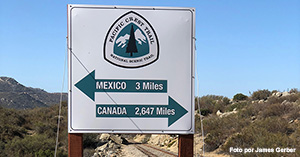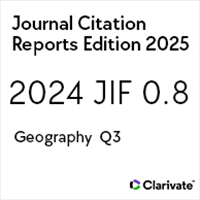Does Mexico need free trade with the United States?
¿Necesita México libre comercio con Estados Unidos?
https://doi.org/10.21670/ref.2210094
Keywords:
free trade, gravity model, bilateral trade, trade reform, panel dataAbstract
Free trade between the United States and Mexico is credited with having developed one of the largest bilateral trading relationships in the world. Yet Mexico-United States trade has been significant for more than a century. Our objective is to show how bilateral trade increased independently of the trade agreement that took effect in 1994, and to specify the other reasons why trade grew. We measure trade flows from the 1880s to the present and estimate a gravity model for the period 1948-2006. The gravity model shows that the fundamental characteristics of Mexico and the United States explain the volume of trade independently of the trade agreement. The trade agreement reduced uncertainty which likely had a positive effect on trade flows. Our analysis does not estimate the quantitative impact of reduced uncertainty but shows that proximity and size of the market were more significant that the trade agreement.Resumen
Al libre comercio entre Estados Unidos y México se le atribuye haber desarrollado una de las relaciones bilaterales más grandes del mundo. Sin embargo, el comercio entre México y Estados Unidos ha sido significativo durante más de un siglo. Mostramos cómo aumentó el comercio bilateral independientemente del acuerdo que entró en vigor en 1994, y especificamos las otras razones por las que creció el comercio. Medimos los flujos comerciales desde la década de 1880 hasta el presente y estimamos un modelo de gravedad para el periodo 1948-2006. El modelo de gravedad muestra que las características fundamentales de México y Estados Unidos explican el volumen de comercio independientemente del acuerdo. El acuerdo redujo la incertidumbre, lo que probablemente tuvo un efecto positivo en los flujos comerciales. En el análisis realizado no se estimó el impacto cuantitativo de la reducción de la incertidumbre, pero muestra que la proximidad y el tamaño del mercado fueron más significativos que el acuerdo comercial.References
Anderson, J. E. (1979). A theoretical foundation for the gravity equation. The American Economic Review, 69(1), 106-116. https://www.jstor.org/stable/1802501
Anderson, J. E. & Van Wincoop, E. (2003). Gravity with gravitas: a solution to the border puzzle. American Economic Review, 93(1), 170-192. http://dx.doi.org/10.1257/000282803321455214 DOI: https://doi.org/10.1257/000282803321455214
Avella Alaminos, I. (2008). Antes del TLCAN: la historia de los acuerdos comerciales entre México y los Estados Unidos (1822-1950). Revista Digital Universitaria, 9(5), 1-10. http://www.revista.unam.mx/vol.9/num5/art29/art29.pdf
Bergstrand, J. H. (1985). The gravity equation in international trade: some microeconomic foundations and empirical evidence. The Review of Economics and Statistics 67(3), 474-81. https://doi.org/10.2307/1925976 DOI: https://doi.org/10.2307/1925976
Bergstrand, J. H. (1989). The generalized gravity equation, monopolistic competition, and the factor-proportions theory in international trade. The Review of Economics and Statistics, 71(1), 143-53. https://doi.org/10.2307/1928061 DOI: https://doi.org/10.2307/1928061
Deardorff, A. V. (1998). Determinants of bilateral trade: does gravity work in a neoclassical world? In J. Frankel (Ed.), The regionalization of the world economy (pp. 7-28). University of Chicago Press. https://doi.org/10.7208/chicago/9780226260228.003.0003
De los Reyes, R. (2018). En la frontera: tensiones políticas y económicas de la ganadería bovina en el norte de Coahuila, 1947-1982. América Latina en la Historia Económica, 25(3), 187-222. https://doi.org/10.18232/alhe.905 DOI: https://doi.org/10.18232/alhe.905
Esquivel, G. & Márquez, G. (2007). Some economic effects of closing the economy: the Mexican experience in the mid-twentieth century. In S. Edwards, G. Esquivel & G. Márquez (Eds.), The decline of Latin American economies: growth, institutions, and crises (pp. 333-361). University of Chicago Press. DOI: https://doi.org/10.7208/chicago/9780226185033.003.0010
Feenstra, R. C. (2004). Advanced international trade: theory and evidence. Princeton University Press.
Garden, R. (2018, October 1). Remarks by President Trump on the United States-Mexico-Canada Agreement. https://trumpwhitehouse.archives.gov/briefings-statements/remarks-president-trump-united-states-mexico-canada-agreement/
Handley, K. & Limão, N. (2015). Trade and investment under policy uncertainty: theory and firm evidence. American Economic Journal. Economic Policy, 7(4), 189–222. https://doi.org/10.1257/pol.20140068 DOI: https://doi.org/10.1257/pol.20140068
Head, K. & Mayer, T. (2014). Gravity equations: workhorse, toolkit and cookbook. In G. Gopinath, E. Helpman & K. Rogoff (Eds.), Handbook of International Economics (v. 4, pp. 131-195). Elsevier. DOI: https://doi.org/10.1016/B978-0-444-54314-1.00003-3
Head, K., Mayer, T. & Ries, J. (2010). The erosion of colonial trade linkages after independence. Journal of International Economics, 81(1), 1-14. https://doi.org/10.1016/j.jinteco.2010.01.002 DOI: https://doi.org/10.1016/j.jinteco.2010.01.002
Hufbauer, G. C. & Schott, J. J. (2005). NAFTA revisited: achievements and challenges. Institute for International Economics.
Instituto Nacional de Estadística y Geografía (Inegi). (2009). Estadísticas históricas de México, 2009. https://www.inegi.org.mx/app/biblioteca/ficha.html?upc=702825460792
International Monetary Fund (IMF). (2020). Direction of Trade Statistics. IMF. https://data.imf.org/?sk=9d6028d4-f14a-464c-a2f2-59b2cd424b85
Irwin, D. A. & Eichengreen, B. (1998). The role of history in bilateral trade flows. In J. A. Frankel (Ed.), The regionalization of the world economy (pp. 33-59). University of Chicago Press. https://doi.org/10.7208/chicago/9780226260228.003.0003 DOI: https://doi.org/10.7208/chicago/9780226260228.003.0003
Kate, A., Wallace, R., Waarts, A. & Ramirez de Wallace, M. D. (1980). Protection and economic development in Mexico. St. Martin’s Press.
Kuntz Ficker, S. (2007). El comercio exterior de México en la era del capitalismo liberal, 1870-1929. El Colegio de México. DOI: https://doi.org/10.2307/j.ctv3f8qjn
López, P. J. (2012). Nacional Financiera durante la industrialización vía sustitución de importaciones en México. América Latina en la Historia Económica, 19(3), 129-163. DOI: https://doi.org/10.18232/alhe.v19i3.531
Lustig, N., Bosworth, B. P. & Lawrence, R. Z. (Eds.). (1992). Introduction. In B. P. Bosworth, R. Z. Lawrence & N. Lustig (Eds.), North American Free Trade: assessing the impact (pp. 1-25). The Brookings Institution.
Lustig, N. (1998). Mexico: the remaking of an economy. The Brookings Institution.
Málaga, J. E., Williams, G. W. & Fuller, S. W. (2001). US-Mexico fresh vegetable trade: the effects of trade liberalization and economic growth. Agricultural Economics, 26(1), 45-55. https://doi.org/10.1111/j.1574-0862.2001.tb00053.x DOI: https://doi.org/10.1111/j.1574-0862.2001.tb00053.x
Mayer, F.W. (1998). Interpreting NAFTA: The Science and Art of Political Analysis. Columbia University Press.
McCallum, J. (1995). National borders matter: Canada-US regional trade patterns. The American Economic Review, 85(3), 615-623. https://www.jstor.org/stable/2118191
Redding, S. & Venables, A. J. (2004). Economic geography and international inequality. Journal of International Economics, 62(1), 53-82. https://doi.org/10.1016/j.jinteco.2003.07.001 DOI: https://doi.org/10.1016/j.jinteco.2003.07.001
Taylor Hansen, L. D. (2003). The origins of the maquila industry in Mexico. Comercio Exterior, 53(11), 1-16. http://revistas.bancomext.gob.mx/rce/magazines/59/7/RCE.pdf
Tinbergen, J. (1962). Shaping the world economy: suggestions for an international economic policy. Twentieth Century Fund.
Trefler, D. (1995). The case of the missing trade and other mysteries. The American Economic Review, 85(5), 1029-1046. https://www.jstor.org/stable/2950973?seq=1
United Nations. (2020). UN Comtrade Database. https://comtrade.un.org/data/
Von Bertrab, H. (1997). Negotiating NAFTA: a Mexican envoy’s account. Praeger.
Wallace, R. (1980). Policies of protection in Mexico. In A. Kate, R. Wallace, A. Waarts & M. D. Ramirez de Wallace (Eds.), Protection and economic development in Mexico (18-88). St. Martin's Press.
World Bank. (1987). World debt tables: 1986-87: external debt of developing countries – first supplement. The World Bank. Washington DC.
World Bank. (2017). Global value chain development report 2017: measuring and analyzing the impact of GVCs on economic development. The World Bank, Washington DC. https://documents1.worldbank.org/curated/en/200681521003568933/pdf/Global-value-chain-development-report-2017-measuring-and-analyzing-the-impact-of-GVCs-on-economic-development.pdf
World Trade Organization (WTO). (2019a). Trade profiles 2019. https://www.wto.org/english/res_e/publications_e/trade_profiles19_e.htm
World Trade Organization (WTO). (2019b). World Tariff Profiles 2019. WTO/ITC/Unctad. https://www.wto.org/english/res_e/booksp_e/tariff_profiles19_e.pdf
Yotov, Y. V., Piermartini, R., Monteiro, J.-A. & Larch, M. (2016). An advanced guide to trade policy analysis: the structural gravity model. WTO iLibrary. https://www.wto.org/english/res_e/booksp_e/advancedwtounctad2016_e.pdf DOI: https://doi.org/10.30875/abc0167e-en
































